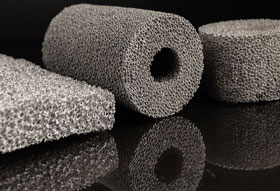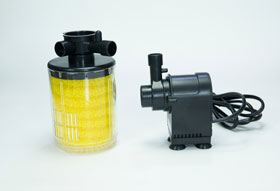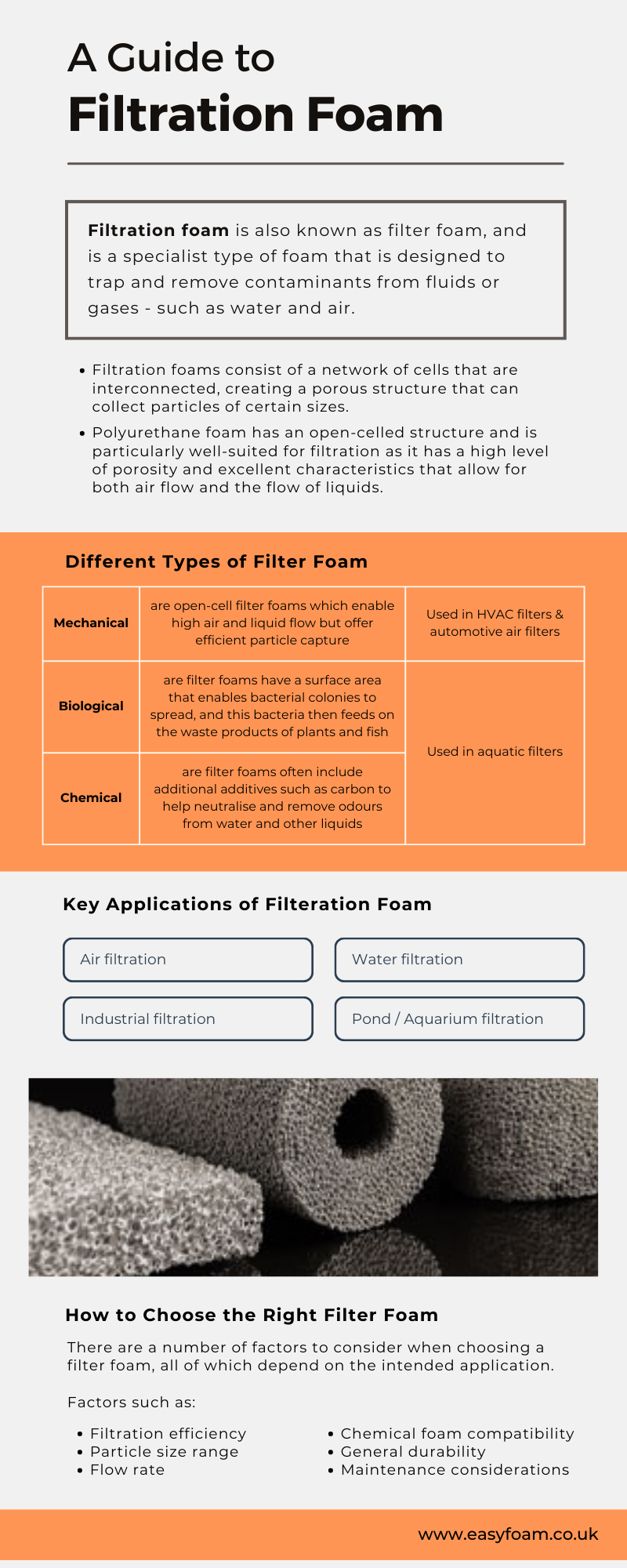A Guide to Filtration Foam: Choosing the Right Filter Foam for Your Needs

Filtration is an essential process in many different industries - a few that may immediately come to mind are water treatment and air purification. Foam is a popular choice as a filtration aid given its properties, which offer excellent filtration capabilities. It is an ideal choice for many different filtration applications.
What is Filtration Foam?
Filtration foam is also known as filter foam, and is a specialist type of foam that is designed to trap and remove contaminants from fluids or gases - such as water and air. Filtration foams consist of a network of cells that are interconnected, creating a porous structure that can collect particles of certain sizes.
Polyurethane foam has an open-celled structure and is particularly well-suited for filtration as it has a high level of porosity and excellent characteristics that allow for both air flow and the flow of liquids. Ultimately, filtration foams need to allow liquid or gas through in order to filter out contaminants.
How Does Filtration Foam Work?
Filtration foam mostly works as ‘mechanical filtration’. In other words, any contaminants of a liquid or gas are physically trapped by the interconnected cells of the foam filter. The overall size and density of the foam cells determine how efficient the foam is at filtering out particles. This means that filtration companies can specify the removal of particular particles based on size, for example.
Different Types of Filter Foam
There are a range of different types of filter foams on the market, though the majority are mechanical. These foams are open-celled which enable high air and liquid flow but offer efficient particle capture. These types of foams are commonly used in things like HVAC filters and automotive air filters.

In other applications, such as in aquatic filters, biological and chemical foams can also be used. Biological filter foams have a surface area that enables bacterial colonies to spread, and this bacteria then feeds on the waste products of plants and fish. Alternatively, chemical foams often include additional additives such as carbon to help neutralise and remove odours from water and other liquids.
Key Applications of Filtration Foam
There are four main uses of filtration foam, including air filtration, water filtration, industrial filtration and pond and aquarium filtration, as we’ve detailed above. Air and water filtration are exactly as the name implies, but industrial filtration involves the use of foam to help remove contaminants from oil and wastewater. Furthermore, filtration foam is also used in industrial chemical processing to remove impurities.
How to Choose the Right Filter Foam
There are a number of factors to consider when choosing a filter foam, all of which depend on the intended application. You should think about filtration efficiency, and note the particle size range that needs to be captured as this will influence the density and pore size of your filtration foam. Similarly, you should consider the required flow rate for your application. Your chosen foam should maintain an adequate flow rate but ensure proper filtration.
Furthermore, it is important to note the chemical compatibility of foam. This means you should check that your chosen filter foam is safe and efficient to use with the fluid or gas being filtered. This is in addition to the general durability and maintenance considerations of your foam filtration system. Consider the durability of your chosen foam and how easy it is to access within your system when needing to be replaced.

